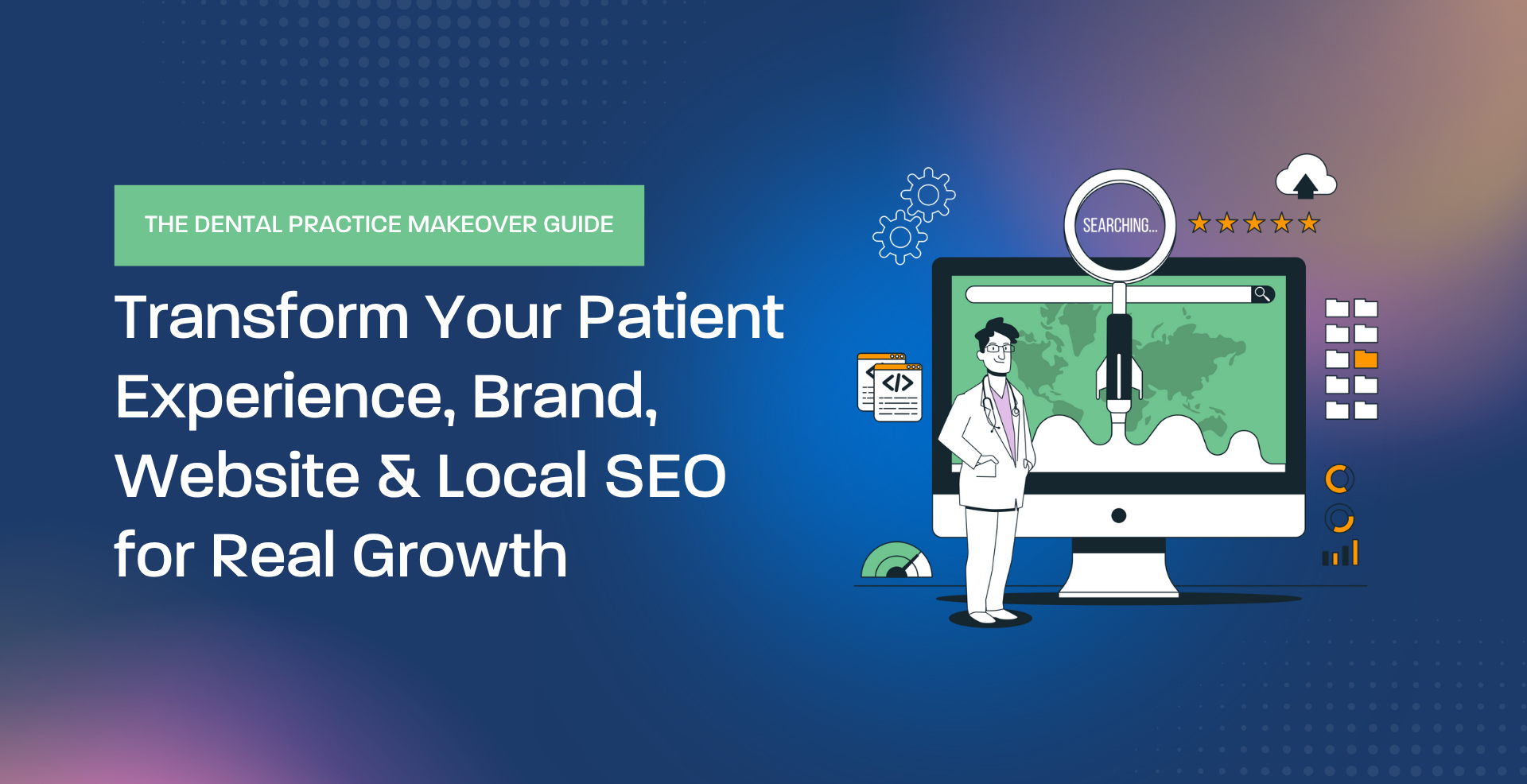Frustrated, Kate slammed her laptop shut. For weeks, she’d poured over SEO guides, meticulously stuffing keywords into her bakery’s website content. Yet, her online presence remained stagnant. “Top keywords,” “density optimization,” – the jargon swirled in her head. Discouraged, she confided in a tech-savvy friend who introduced her to the concept of semantic search. Suddenly, the focus shifted from keyword quantity to quality content. Intrigued, Kate embarked on a new approach, crafting informative blog posts about gluten-free cake recipes and tips for perfect at-home cupcakes. Within months, her website traffic soared, and Sarah’s bakery became the go-to destination for online dessert enthusiasts. This story exemplifies the changing world of SEO in 2024, where user-centric content reigns supreme.
In today’s digital age, attracting potential clients online is vital for any business, from established law firms to innovative startups and local dentists. Search Engine Optimization (SEO) plays an essential role in achieving this goal, ensuring your website ranks higher in search results for relevant keywords. Keyword density, the frequency at which specific keywords appear on your website, is a crucial element within SEO. Let’s explore how it works and how to leverage it effectively.
P.S. Need expert help with design, email marketing, social media management, and other marketing services? Geeks For Growth can help you drive growth for your business!
Understanding Keyword Density and its Role in SEO
As a dentist with a website, you know patients will be searching online with terms like “family dentist near me” or “dental implants cost.” Keyword density refers to the proportion of times these keywords (or any relevant terms) appear on your web pages compared to the total word count. Search engines like Google analyze keyword density to gauge how well your content aligns with search queries.
In the past, achieving a high keyword density was believed to be the key to ranking high. However, search engine algorithms have become far more sophisticated. Today, it’s about quality content that naturally incorporates relevant keywords, rather than simply stuffing them in.
Here’s why achieving an optimal keyword density remains important:
- Relevance Signals: Search engines use keyword density as one indicator of a page’s relevance to a specific search query. The presence of relevant keywords helps search engines understand your content’s topic and match it with user searches.
- User Experience: Strategically placed keywords can enhance user experience. When potential clients find the information they seek easily (through relevant keywords used naturally), they’re more likely to stay engaged and explore your offerings.
The Evolution of Keyword Density: Quality Over Quantity
Years ago, websites could achieve high rankings by simply repeating keywords excessively (keyword stuffing). However, search engines have become adept at identifying and penalizing such practices. Today, the focus is on creating high-quality content that provides genuine value to users.
Here’s an example: Imagine a lawyer specializing in personal injury cases. Keyword stuffing their website with “personal injury lawyer” wouldn’t be helpful. Instead, creating informative content discussing various personal injury types, potential compensation, and the legal process, while naturally incorporating those keywords, provides valuable information and improves SEO.

Best Practices for Keyword Density
So, how do you strike the balance between relevance and readability? Here are some best practices:
- Target a Range, Not a Fixed Number: There’s no one-size-fits-all keyword density. It depends on factors like content type and keyword competitiveness. Aim for a natural distribution of relevant keywords throughout your content, typically between 0.5% and 3%.
- Focus on Long-Tail Keywords: Long-tail keywords are more specific phrases users are likely to search for. For example, instead of just “dentist,” target “affordable family dentist in [your city].” This helps attract targeted traffic and improves conversion rates.
- Prioritize User Experience: Write content for humans, not search engines. Prioritize clarity, flow, and valuable information for your target audience. Keywords should be integrated seamlessly within the content, not disrupt its readability.
- Utilize Keyword Research Tools: Several tools like AnswerThePublic can help you identify relevant keywords and their search volume. These tools can provide valuable insights to guide your content strategy.
Common Mistakes to Avoid
Now that you understand the importance of balanced keyword density, let’s explore some common mistakes to steer clear of:
Common Misuse of Keyword Density Metrics as an SEO Tool
Keyword density is often misunderstood as a key to SEO success. When used correctly, it can be an effective tool for search engine optimization. When done improperly however, keyword density can become a hindrance. The goal of using keywords in content is to increase the chances of ranking higher in search engines like Google and other major search engines when users conduct specific searches.
This is evident from SEO strategies that use alternative phrasing techniques such as latent semantic indexing which uses synonyms and phrases related to the topic instead of using one exact keyword throughout an article. A recent study by Geeks For Growth SEO analysis tool found that SEO professionals who wrote articles using 1-2% keyword repetition rates were more likely to rank higher than those writing with lower density.
You might need to rephrase your content for better results. Instead of using the same key phrase repeatedly throughout the page and post, focus on naturally including relevant keywords within context.
Overly Aggressive Use of Keywords in Content Copywriting
Using keywords just because you can doesn’t help your content. One of the most common mistakes to avoid is using overly aggressive keyword density in content copywriting. The goal of SEO should be to create high-quality, engaging content that provides value to readers, not just stuff a page with keywords.
If you focus too much on incorporating keywords into your writing style it can have negative effects. Using the same keyword an excessive number of times in one article. This could be especially true for new companies or those who are just starting their SEO journey and are still learning about what is effective.
Neglecting Meta Description Optimization with Keyword Density
keywords are words or phrases that have a specific meaning. They’re used to describe what your website is about and help search engines like Google find you.
First, never keyword stuff because people don’t speak in keywords anymore. Just as how they don’t say “I love eating pizza” every time they think of food, use keywords in context naturally when talking about the subject matter.
Using too many keywords is bad for your website’s readability and user experience. It can also hurt you with search engine rankings. For instance if someone searches online for something related to dieting it would be terrible to fill their results page full of words like “weight loss”, “lose weight”, “losing weight” etc.
Step-by-step guide to conducting keyword research and the tools you need
Effective keyword research is an important part of a successful SEO strategy. By targeting the right keywords, you can attract relevant traffic, improve search engine rankings, and ultimately drive more conversions for your business.
Step 1: Identify Your Niche and Audience
Begin by defining your business niche and understanding your target audience. Consider the products or services you offer, the problems you solve, and the language your audience uses to search for information.
Step 2: Generate Keyword Ideas
Use free keyword research tools like Ahrefs or Backlinko to generate a list of potential keywords. These tools can help you identify keyword groups and find the ones with better volume, easier keyword difficulty, and more commercial intent.
Step 3: Analyze Keyword Metrics
Evaluate the search volume, keyword difficulty, and competition for each keyword. Prioritize keywords with a good balance of search volume and lower keyword difficulty, as these are more likely to rank well in search results.
Step 4: Understand Search Intent
Consider the search intent behind each keyword. Is the user looking for informational content, navigational content, or transactional content? Targeting a mix of informational and conversational keywords helps search engines understand that your business is online to provide value, not just to sell.
Step 5: Create a Balanced Keyword Strategy
Aim for a 2:1 ratio of informational to conversational keywords in your SEO strategy. For every 10 conversion keywords you target, consider including at least 20 informational keywords. This balanced approach helps you attract a wider audience and demonstrate your expertise in your niche.
The first step is to identify the most important phrases or words related to your topic. This could be a key concept, a brand name, or something unique about what you’re selling. For example, let’s say you run an online store for outdoor gear. Your top keyword might be “hiking boots.” You can incorporate this phrase naturally throughout your product descriptions and category headers. But avoid using it too much – that’s where the magic happens!
A good rule of thumb is to use keywords in high-traffic areas like titles, subheadings, and meta descriptions. These spots have a lot of weight when search engines look at how well your content matches what people are searching for.
Take the title of this article: “Best Practices for Optimizing Keyword Density.” This phrase should be used as the first line in that section because it’s all about keyword density! You can also use it as a subheading or even just towards the end when you’re summing up your blog.
Step 6: Optimize Your Content
Incorporate your target keywords naturally throughout your content, including in headings, meta descriptions, and image alt tags. Avoid keyword stuffing, as this can harm your search engine rankings.
By following these basic steps and leveraging free keyword research tools, you can develop a robust keyword strategy that helps your business rank higher in search results and attract more qualified leads.
Beyond Keywords: Understanding Search Intent
Remember, keyword research is just the first step. Understanding the “search intent” behind those keywords is crucial. Are users seeking informational content (e.g., “What are the signs of gum disease?”), looking for a specific service (e.g., “teeth whitening dentist near me”), or ready to make a purchase (e.g., “order dental cleaning kit online”)? Tailoring your content to address their specific intent improves user experience and conversion rates.
The Power of Semantic Search and Latent Semantic Indexing (LSI)
Modern search engines go beyond simply counting keywords. They consider the overall context and meaning of your content using techniques like Latent Semantic Indexing (LSI). This means incorporating relevant synonyms, related terms, and internal linking to a broader information ecosystem on your website. For instance, a blog post on “dental implants” might naturally include related terms like “dental bridges,” “implant surgery,” or “permanent tooth replacement,” demonstrating a deeper understanding of the topic and enhancing user experience.
Examples Across Industries: Putting Keyword Density into Practice
Let’s delve deeper and explore how different businesses can leverage keyword density effectively within their content strategy:
- Law Firms: Imagine a lawyer specializing in family law. Their website might target keywords like “child custody attorney,” “divorce lawyer fees,” or “prenuptial agreement [state].” Blog posts could discuss navigating the child custody process, outlining the average cost of divorce in their state, or explaining the benefits of prenuptial agreements. These examples showcase relevant keywords naturally integrated within informative content that caters to potential clients’ needs.
- SME (Small & Medium Enterprise): An online bakery might target keywords like “custom cakes near me,” “vegan dessert options,” or “gluten-free bread delivery.” Their website could feature a page dedicated to custom cake designs, a blog post exploring popular vegan dessert recipes, and a detailed description of their gluten-free bread delivery service. This approach ensures they rank for relevant searches while offering valuable information to potential customers.
- Dentists: As mentioned earlier, a dentist targeting “family dentist” might struggle to rank well. However, a focus on long-tail keywords like “emergency dental care [city],” “children’s dentistry services,” or “affordable dental implants cost” can significantly improve their search visibility. Blog content could address common dental emergencies, explain the importance of children’s dental hygiene, or provide a cost comparison of different dental implant options. This strategy attracts targeted traffic and positions the dentist as a valuable resource for potential patients.
Keyword Density in 2025: A Shift Towards Meaning and Context
The landscape of SEO is constantly evolving, and with advancements in AI in 2024, keyword density is no longer the sole king. Here’s a breakdown of what this means for you as a small business owner:
The Decline of Keyword Stuffing: Gone are the days of cramming keywords into your content just to appease search engines. AI-powered algorithms are far more sophisticated, penalizing websites that prioritize keyword stuffing over user experience.
The Rise of Semantic Search: Search engines like Google now prioritize understanding the meaning and context of your content. This means focusing on relevant topics and naturally incorporating synonyms, related terms, and internal linking within your website.
What This Means for You:
- Focus on Quality Content: Create informative and engaging content that genuinely provides value to your target audience. Address their pain points, answer their questions, and establish yourself as an expert in your field.
- Target Topics, Not Just Keywords: Research relevant topics your ideal customers might search for. Instead of just targeting “plumber,” explore long-tail keywords like “emergency plumbing services [your city]” or “tips for fixing a leaky faucet.”
- Embrace Natural Language: Write content that reads naturally and flows well. Avoid keyword stuffing that disrupts user experience.
- Leverage AI Tools: Several AI-powered tools can help you identify relevant topics, research related keywords, and optimize your content for search intent.
While the emphasis on strict keyword density has lessened, understanding relevant keywords remains important. Here’s how AI can benefit you:
- Smarter Keyword Research: AI tools can analyze vast amounts of search data to identify high-performing, long-tail keywords with lower competition. This allows you to target more specific searches and attract qualified leads.
- Content Topic Ideas: AI can analyze your competitors’ content and suggest relevant topics you might be missing.
- Content Optimization: AI tools can help ensure your content incorporates relevant semantic terms and reads naturally, further improving your search ranking potential.
Remember: As a small business owner, you don’t need to become an SEO expert. By focusing on creating high-quality content, utilizing AI tools for keyword research and content optimization, and prioritizing user experience, you can effectively navigate the changing SEO landscape in 2024.
A Strategic Approach to Keyword Density
By understanding the role of keyword density and implementing these best practices, you can optimize your website content for search engines without compromising user experience. Remember, SEO is a long-term strategy. Creating high-quality, informative content that naturally incorporates relevant keywords will attract organic traffic, improve user engagement, and ultimately lead to more leads and clients for your business.
Bonus Tip: Regularly monitor your website’s analytics to track your SEO performance and identify areas for improvement. You can also use tools like Google Search Console to gain insights into how users are finding your website and which keywords are driving traffic.
By combining strategic keyword density management with a focus on valuable content, you can empower your website to attract the right audience and propel your business forward.
While keyword density remains a factor in SEO, it’s just one piece of the puzzle. The true key to success lies in creating high-quality, informative content that resonates with your target audience. By prioritizing user experience, naturally integrating relevant keywords, and understanding search intent, you can attract organic traffic, establish yourself as a thought leader, and ultimately achieve your business goals.
Do you need expert help with reaching your audience, website or graphic design, email marketing, social media management, and other marketing services? Geeks For Growth can help you drive growth for your business!






